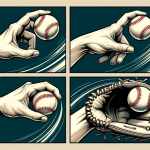Types Of Shots
Types of shots are an essential aspect of filmmaking and video production. Whether you’re a seasoned filmmaker or a novice video creator, understanding the different types of shots and their impact can help you produce better content and tell more compelling stories. A shot is a single, continuous take from a particular camera angle, and it is the building block of any video.
There are several basic shot types that every filmmaker or video creative should know. These include the extreme long shot, the long shot, the medium shot, the close-up shot, and the extreme close-up shot. Each of these shots has a specific purpose and can be used to convey a different emotion or message to the audience. Additionally, specialized shots and angles, such as the aerial shot and the point of view shot, can add creativity and depth to your shots.
Understanding shot composition and framing is also crucial to creating effective shots. The placement of the subject, the use of negative space, and the framing of the shot can all impact how the audience perceives the shot. Moreover, camera movements, such as pans, tilts, and tracking shots, can add dynamism and energy to your shots. By mastering these techniques, you can create more engaging and impactful videos.
Key Takeaways
- Understanding the different types of shots and their impact is essential for any filmmaker or video creator.
- Basic shot types, specialized shots and angles, shot composition and framing, and camera movements are all important aspects of creating effective shots.
- By mastering these techniques, you can create more engaging and impactful videos.
Basic Shot Types

When it comes to filmmaking, there are a variety of camera shots that can be used to convey different aspects of a scene. In this section, we’ll explore some of the most common basic shot types, including establishing shots, wide shots, medium shots, and close-up shots.
Establishing Shot
An establishing shot is typically the first shot of a new scene, and it’s used to provide context and set the stage for what’s to come. This shot is often a wide shot that shows the location where the scene takes place, such as a city skyline or a building exterior. The establishing shot can also be used to introduce a new character or group of characters.
Wide Shot
A wide shot, also known as a long shot, is used to show the subject in relation to their environment. This shot is typically taken from a distance, and it can be used to establish the location, show the scale of a scene, or provide a sense of perspective. Wide shots are often used in action scenes to show the movement of characters within a larger space.
Medium Shot
A medium shot is taken from a closer distance than a wide shot and typically shows the subject from the waist up. This shot is often used to show the subject’s body language and facial expressions, as well as their interaction with other characters or objects in the scene. Medium shots are commonly used in dialogue scenes and can help to establish the emotional tone of a scene.
Close-Up Shot
A close-up shot is taken from a very close distance and typically shows only a part of the subject, such as their face or hands. This shot is used to convey emotion and detail, and it can be used to highlight a particular object or aspect of the scene. Close-up shots are often used in dramatic scenes to show the emotional impact of a character’s actions or words.
In summary, understanding the different types of shots is essential for any filmmaker or cinematographer. By using a variety of shot types, filmmakers can convey different aspects of a scene and create a more engaging and dynamic visual experience for the audience.
Specialized Shots and Angles
Extreme Long Shot
An extreme long shot (ELS) is a type of shot that is taken from a distance, showing the subject in its entirety and its surrounding environment. This shot is often used to establish a location or setting. An ELS can also be used to emphasize the size of the subject in relation to its surroundings. It is also known as the establishing shot, which is used to introduce the context in which the action takes place.
Cowboy Shot
A cowboy shot is a type of shot that is taken from the waist up, showing the subject’s gun holster and belt. This shot is often used in western movies to emphasize the cowboy’s weapon and to create a sense of tension. It is also known as the American shot.
Over-the-Shoulder Shot
An over-the-shoulder shot (OTS) is a type of shot that is taken from behind one character’s shoulder, showing the other character in the foreground. This shot is often used in dialogue scenes to show the interaction between two characters. It is also used to show the point of view of one character while they are talking to another character.
Point of View Shot
A point of view (POV) shot is a type of shot that is taken from the perspective of a character. This shot is often used to show the character’s point of view and to create a sense of immersion. It is also used to show the character’s emotions and reactions. A POV shot can be used to create a sense of intimacy with the character or to create a sense of tension.
In conclusion, specialized shots and angles are an important aspect of filmmaking. They can be used to create a sense of immersion, to emphasize certain aspects of the subject, or to establish a location or setting. Understanding these shots and angles can help filmmakers create more engaging and effective films.
Camera Movements
Camera movements are essential in filmmaking as they help to convey emotions, create a sense of movement, and provide a different perspective to the audience. There are various types of camera movements, including Pan, Tilt, Dolly, and Roll.
Pan
Pan refers to the horizontal movement of the camera, where it swivels from left to right or right to left. It is used to follow a moving object or character, create a sense of space, or show the relationship between two characters. A pan can also be used to reveal a new location or object.
Tilt
Tilt refers to the vertical movement of the camera, where it moves up or down. It is used to show the height of a character or object, create a sense of grandeur, or show the relationship between the character and the environment. A tilt can also be used to reveal a new location or object.
Dolly
Dolly refers to the movement of the camera on a track or wheels. It is used to create a smooth movement, follow a character or object, or show a new perspective. A dolly can also be used to create a sense of distance or intimacy between the character and the camera.
Roll
Roll refers to the rotation of the camera, where it tilts to the side. It is used to create a sense of disorientation, show a character’s point of view, or create a sense of unease. A roll can also be used to create a dramatic effect or show the relationship between two characters.
Overall, camera movements are crucial in filmmaking as they add depth, emotion, and perspective to the story. Each type of movement has its own unique effect, and it is up to the filmmaker to use them effectively to convey their vision.
Shot Composition and Framing
In filmmaking, shot composition and framing are essential elements that help to convey the intended message of a scene. Shot composition refers to the arrangement of visual elements within the frame of a shot, while framing refers to the position and size of the shot within the screen.
Shot Size
Shot size is an important aspect of shot composition that determines how much of the subject is visible on the screen. There are different types of shot sizes, including extreme long shot, long shot, medium shot, close-up shot, and extreme close-up shot. Each shot size serves a specific purpose, and filmmakers use them to create different visual effects and convey different emotions.
Camera Angle
Camera angle is another crucial element of shot composition and framing that determines the viewer’s perspective of the subject. Different camera angles can create different emotional responses in the audience. Some of the most common camera angles include high angle, low angle, and eye level.
High Angle
A high angle shot is taken from above the subject, and it makes the subject appear smaller and less powerful. This type of shot is often used to convey vulnerability, weakness, or submission.
Low Angle
A low angle shot is taken from below the subject, and it makes the subject appear larger and more powerful. This type of shot is often used to convey strength, dominance, or superiority.
In summary, shot composition and framing are essential elements of filmmaking that help to convey the intended message of a scene. Shot size and camera angle are two critical components of shot composition that determine the viewer’s perspective of the subject. Filmmakers use different shot sizes and camera angles to create different visual effects and convey different emotions.
Understanding Shot Impact
When it comes to filmmaking, shot types play a crucial role in conveying emotions, building tension, and creating significance. Each type of shot has its own unique impact on the viewer. In this section, we will explore the emotional impact of close-ups, the significance of wide shots, and the tension created by angle variation.
Emotional Impact of Close-Ups
Close-up shots are used to capture the emotions of the actors and provide a more intimate view of the scene. They are often used to convey a character’s inner thoughts or feelings. Close-ups can be used to create a sense of intimacy between the viewer and the character, making the audience feel more connected to the story.
Significance of Wide Shots
Wide shots are used to establish the setting and provide context for the scene. They are often used to show the environment and the relationship between the characters and the setting. Wide shots can be used to create a sense of scale and significance, making the audience feel small in comparison to the vastness of the scene.
Tension with Angle Variation
Angle variation is used to create tension and add visual interest to the scene. It can be used to show power dynamics between characters or to create a sense of unease. By changing the angle of the shot, the filmmaker can manipulate the viewer’s perception of the scene and create a more dynamic viewing experience.
In conclusion, shot types are an essential aspect of filmmaking that can greatly impact the emotional response of the viewer. By using close-ups, wide shots, and angle variation, filmmakers can create a more immersive and engaging viewing experience.






